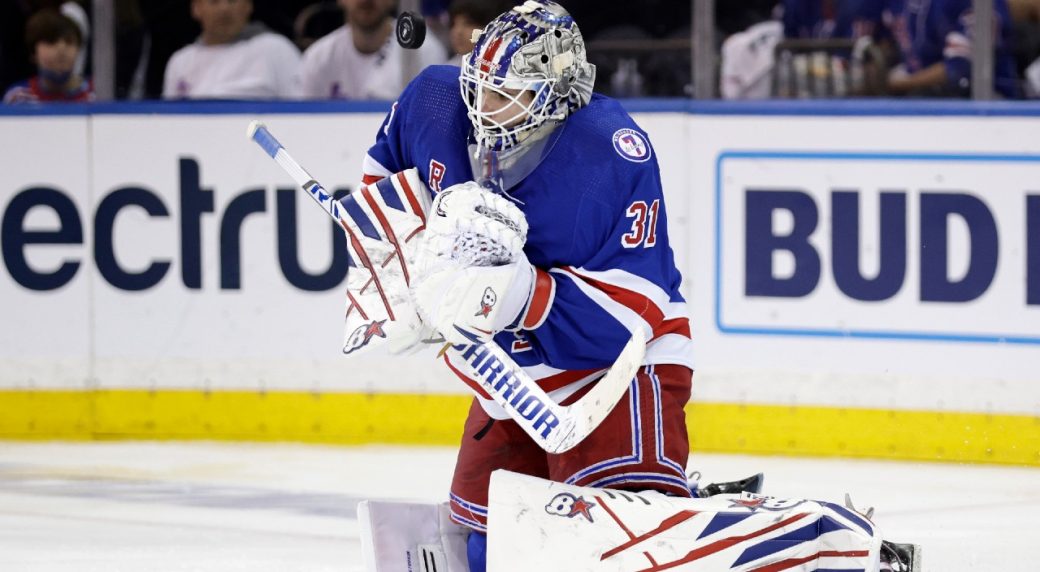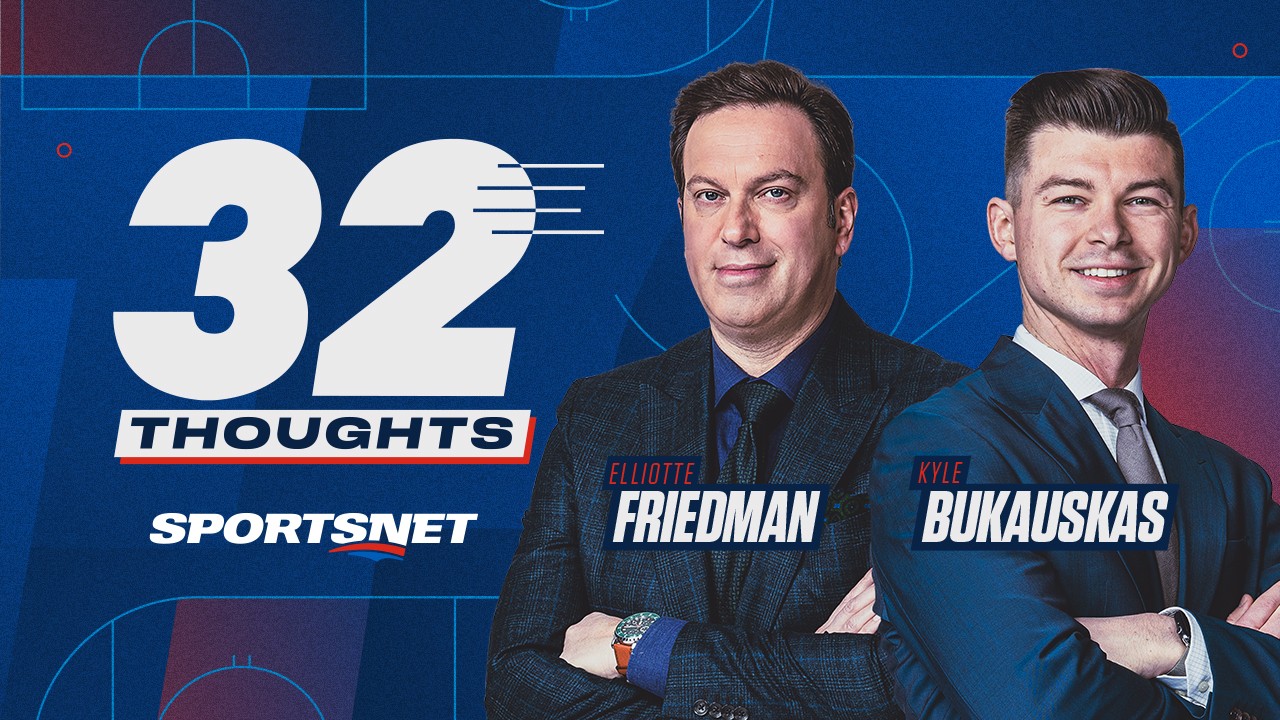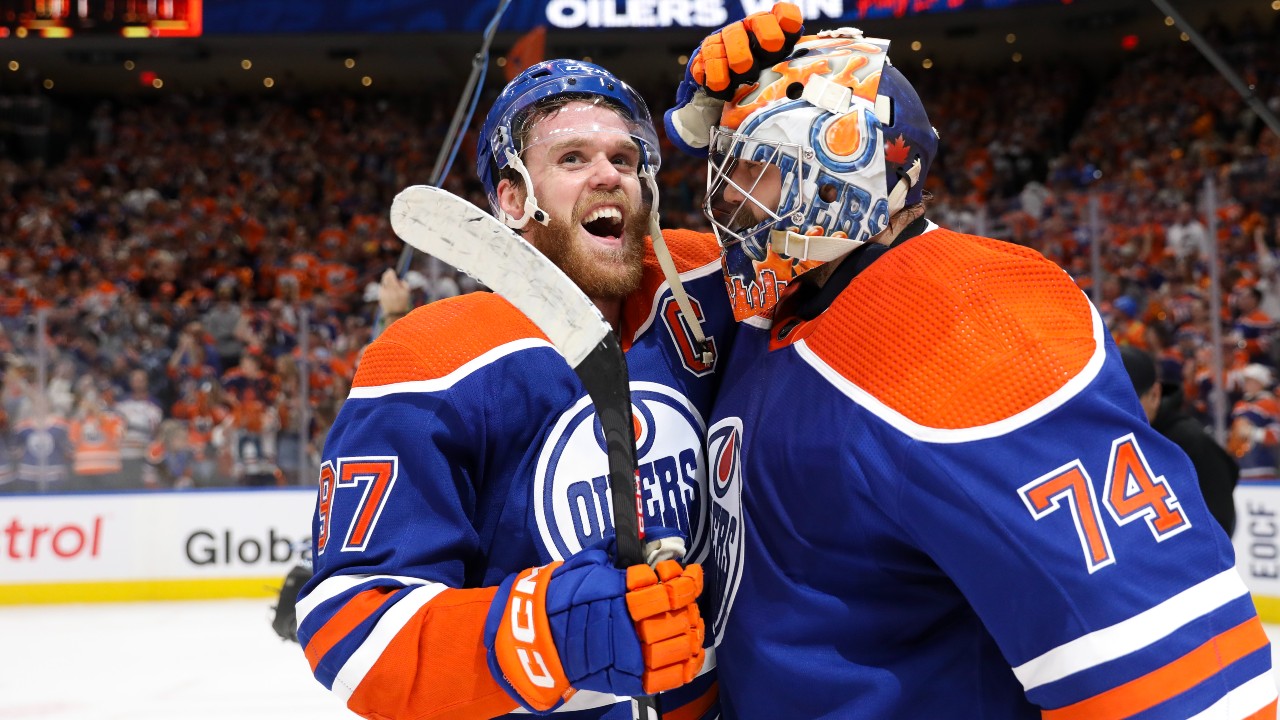
It’s been a busy few days on the goalie market. And it’s easy to wonder where we go from here with regard to the masked man who could be a whale of a UFA in 10 months.
Forty-eight hours before the Boston Bruins began their season in Florida on Tuesday, Jeremy Swayman and the club finally came together on an eight-year contract. Then, one day before the Ottawa Senators played their first contest on Thursday, former Bruin Linus Ullmark — Ottawa’s prized off-season acquisition — inked a four-year extension that will keep him in Canada’s capital through 2028-29.
In between those agreements, former New York Rangers goalie Kevin Weekes reported that current Rangers goalie Igor Shesterkin rebuffed an eight-year extension that would have paid him $88 million and assigned him the highest-ever cap hit for a goalie of $11 million.
So the dance continues.
Sportsnet’s Elliotte Friedman has, naturally, been all over this and Friedman’s belief is that Shesterkin’s camp believes he’s the most important member of the Blueshirts and his salary should reflect that reality. Here’s Friedman writing in 32 Thoughts a couple days ago:
New York’s highest-paid player is the sublime and superb Artemi Panarin. His cap hit is slightly above $11.64 million. I believe Shesterkin’s representatives (agent is Rick Komarow) have a simple argument: Igor is your best player, he should be compensated as such. In theory, no one disagrees.
In practice, we’ve got a problem. And the problem is the position.
Ah yes, the position. On one hand, there’s the school of thought that puckstopping is voodoo, you never know what you’re going to get from a guy from one year to the next, so try not to spend too much on your crease and hope for the best.
On the other hand, what was true in hockey 50 years ago remains the same today; not much can quash your hopes of winning quicker than inept goaltending and shouldn’t the guy who plays the most valuable position make the most money?
For now, let’s set aside Shesterkin’s (seemingly valid) point about being New York’s best player and narrow the focus to other goalie contracts as comparables. On one hand, you look around the landscape the past few years and wonder how anybody could turn down $11 million per year when some of the most decorated goalies in the business have signed deals well south of that. This is where cap percentage enters the equation, though, and if you pay any attention to the business of the NHL, you know the cap is expected to spike by about $5 million for 2025-26.
For the sake of simplicity, let’s assume Shesterkin’s number is $11.8 million to clear Panarin, thus making it 12.76 percent of a presumed $92.5-million NHL salary cap starting in 2025-26. Shesterkin would be 29 when that contract took hold next fall and would turn 37 about halfway through the final year of an eight-year deal.
Now, with big-time help from the wonderful Puckpedia and Hockey Reference, let’s compare that theoretical ask to what other goalies in Shesterkin’s stratosphere have signed for in the past handful of years.
Linus Ullmark, four years, $33 million
Signed on: Oct. 9, 2024
Cap hit: $8.25 million
Cap percentage at start of deal: 8.91 per cent in 2025-26
Age in final season of contract: 35
Credentials on signing day: Ullmark is the 2023 Vezina Trophy winner. From 2021-22 though last season, his .924 save percentage in 130 games is the best mark in the league.
Jeremy Swayman, eight years, $66 million
Signed on: Oct. 6, 2024
Cap hit: $8.25 million
Cap percentage at start of deal: 9.38 per cent in 2024-25
Age in final season of contract: 33
Credentials on signing day: Swayman ranked third in goals saved above expected/60 minutes in each of the past two seasons.
Juuse Saros, eight years, $61.92 million
Signed on: July 1, 2024
Cap hit: $7.74 million
Cap percentage at start of deal: 8.37 per cent in 2025-26
Age in final season of contract: 37
Credentials on signing day: Saros has not finished lower than sixth in Vezina voting in any of the past four seasons. He’s played 190 games in the past three years, more than any other puckstopper.
Connor Hellebuyck, seven years, $59.5 million
Signed on: Oct. 9, 2023
Cap hit: $8.5 million
Cap percentage at start of deal: 9.66 per cent in 2024-25
Age in final season of contract: 37
Credentials on signing day: Hellebuyck had one Vezina Trophy to his credit the day he inked his extension and had also finished in the top three on two other occasions in his career.
Ilya Sorokin, eight years, $66 million
Signed on: July 1, 2023
Cap hit: $8.25 million
Cap percentage at start of deal: 9.38 per cent in 2024-25
Age in final season of contract: 36
Credentials on signing day: Sorokin finished second in Vezina voting in the year leading up to his extension and had a .924 save percentage in 136 career games to that point.
Andrei Vasilevskiy, eight years, $76 million
Signed on: July 29, 2019
Cap hit: $9.5 million
Cap percentage at start of deal: 11.66 per cent in 2020-21
Age in final season of contract: 33
Credentials on signing day: Vasilevskiy was coming off a Vezina-winning showing at just 24 years old and had finished third in Vezina voting the year prior.
Sergei Bobrovsky, seven years, $70 million
Signed on: July 1, 2019
Cap hit: $10 million
Cap percentage at start of deal: 12.27 per cent in 2019-20
Age in final season of contract: 37
Credentials on signing day: Bobrovsky was a two-time Vezina winner when he signed with Florida. His deal is the only one highlighted here that was inked by a player who was a UFA.
Carey Price, eight years, $84 million
Signed on: July 2, 2017
Cap hit: $10.5 million
Cap percentage at start of deal: 13.21 per cent in 2018-19
Age in final season of contract: 38
Credentials on signing day: Price was just two years removed from an incredible 2015 hat trick that saw him claim the Hart Trophy, Ted Lindsay Award and Vezina Trophy.
There’s a pretty simple conclusion here. Ullmark, Swayman, Saros, Hellebuyck and Sorokin all signed new deals in the past 16 months and not one of them exceeds 10 percent of the cap (assuming it goes up to $92.5 million next year) in Year 1 of the deal. By that measure, Shesterkin’s ask is rich.
But, when you go back a few years, Shesterkin’s ask is way more in line with what Vasilevskiy, Bobrovsky and Price received in terms of cap percentage. Even if Shesterkin signed for an even $12 million per year, his cap percentage (12.97 per cent) would still be a shade under what Price signed for in 2017. And, don’t forget, Vasilevskiy and Bobrovsky both signed in state-tax-free Florida. Vasilevskiy’s hit, in particular, would almost certainly be at least $1 million higher per year had he played somewhere else.
Does Shesterkin deserve more than the five guys who’ve signed big deals since 2023 got? There’s just no way to avoid some subjectivity in that discussion and you can go in circles for days debating the merits of each player. From the objective file, for what it’s worth, Shesterkin has the most goals saved above average (79.5) of any goalie from the start of 2021-22 through last season and his playoff save percentage since the 2022 post-season (.929 in 43 games) is 13 points higher than anybody else who’s played at least 20 games.
No matter who you side with in the best-goalie debate, you have to agree Shesterkin’s camp is armed with some fantastic bullet points.
At some point, those facts will almost certainly net him a landmark deal — whether before July 1 with the Rangers or as a coveted UFA with another squad.




